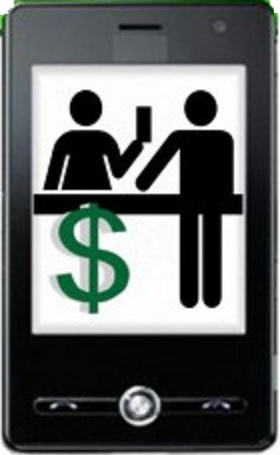Enthusiasm for mobile payments is growing quickly among retailers and consumers alike
In 2015, the mobile payments space began to emerge as a mainstream power. Over the holiday season, various businesses were exposed to the success that could be had from a focus on the mobile sector, and their enthusiasm for mobile payments is likely to carry over into this year. Matt Asay, vice president of mobile for Adobe Marketing Cloud, noted that the holiday season was a fantastic time for mobile shopping despite the fact that many consumers reported stress from using mobile payments services.
Retailers are being pressured to improve the mobile shopping experience
Asay suggests that consumers are fairly ahead of retailers when it comes to mobile shopping. They are well aware of what they want in a mobile shopping experience, and retailers have been struggling to accommodate the demands coming from consumers. Converting mobile shoppers into actual paying customers has proven to be a challenge. Retailers are expected to focus more heavily on improving the mobile shopping experience in 2016.
Report shows that mobile payments will comprise 45% of all e-commerce transactions by 2020
 According to a recent report from BI Intelligence, mobile payments will comprise 45% of all e-commerce transactions by 2020. This will account for approximately $284 billion in sales. This is three times more in sales that is expected to be reported in 2016. Retailers may have to shift focus away from mobile applications in order to effectively engage the customers that are becoming invested in mobile payments. Mobile websites have, thus far, provided a better shopping experience for consumers than applications.
According to a recent report from BI Intelligence, mobile payments will comprise 45% of all e-commerce transactions by 2020. This will account for approximately $284 billion in sales. This is three times more in sales that is expected to be reported in 2016. Retailers may have to shift focus away from mobile applications in order to effectively engage the customers that are becoming invested in mobile payments. Mobile websites have, thus far, provided a better shopping experience for consumers than applications.
More retailers may begin supporting mobile payments in physical stores
Retailers are expected to begin supporting mobile payments in their physical stores as a way to provide consumers with a worthwhile experience. Many consumers already use their smartphones and tablets in physical stores, but only to search for and research products that they are interested in. Retailers may be able to increase conversion rates by supporting mobile payments at physical stores, allowing consumers to make purchases with their devices rather than traditional forms of commerce.
Gartner has predicted that by 2018, about 50 percent of shoppers will use wearables or smartphones to pay for purchases.
Research firm, Gartner Inc., has released a recent prediction that wearable technology will play a tremendously larger role in mobile payments over the next few years, saying that half of all consumers will be using them or smartphones for that purpose by the close of 2018.
This forecast has come at a time in which mobile payments are still only just gaining initial adoption.
In markets such as Japan, North America and many countries throughout Western Europe, mobile payments remain a small but growing transaction technology. Gartner feels that by 2018, they will have become popular enough that fifty percent of consumers will be using their smartphones or wearable technology devices in order to complete transactions at checkout counters in retail stores and restaurants.
This also suggests that Gartner feels that wearable technology will also be growing in its popularity.
 According to Gartner principal research analyst, Amanda Sabia, “Innovation in apps, mobile devices and mobile services are impacting traditional business models, particularly in the way people use personal technology for productivity and pleasure.” Sabia also pointed out the importance that product managers come to understand who these shoppers actually are when it comes to catering to new devices and providing services, while discovering just how those gadgets are being used by those customers. “Knowing your customer is imperative in order to capture a fair share of spending opportunities in this dynamic marketplace.”
According to Gartner principal research analyst, Amanda Sabia, “Innovation in apps, mobile devices and mobile services are impacting traditional business models, particularly in the way people use personal technology for productivity and pleasure.” Sabia also pointed out the importance that product managers come to understand who these shoppers actually are when it comes to catering to new devices and providing services, while discovering just how those gadgets are being used by those customers. “Knowing your customer is imperative in order to capture a fair share of spending opportunities in this dynamic marketplace.”
There were three types of mobile payments that were described by Gartner within its recent report. It identified them as: wearables or smartphone based payments, branded mobile wallets from credit card issuers or banks, or branded mobile wallets from retailers.
Still, Gartner reported that those mobile payments services based on NFC technology – such as Android Pay, Apple Pay and Samsung Pay – will remain limited throughout the length of the forecast period simply because the partnerships between retailers and financial organizations for using smartphones and wearable technology in that way will not yet have been established. Moreover, consumers have yet to see the value in that type of payment transaction.
 According to a recent report from BI Intelligence, mobile payments will comprise 45% of all e-commerce transactions by 2020. This will account for approximately $284 billion in sales. This is three times more in sales that is expected to be reported in 2016. Retailers may have to shift focus away from mobile applications in order to effectively engage the customers that are becoming invested in mobile payments. Mobile websites have, thus far, provided a better shopping experience for consumers than applications.
According to a recent report from BI Intelligence, mobile payments will comprise 45% of all e-commerce transactions by 2020. This will account for approximately $284 billion in sales. This is three times more in sales that is expected to be reported in 2016. Retailers may have to shift focus away from mobile applications in order to effectively engage the customers that are becoming invested in mobile payments. Mobile websites have, thus far, provided a better shopping experience for consumers than applications.
 According to Gartner principal research analyst, Amanda Sabia, “Innovation in apps, mobile devices and mobile services are impacting traditional business models, particularly in the way people use personal technology for productivity and pleasure.” Sabia also pointed out the importance that product managers come to understand who these shoppers actually are when it comes to catering to new devices and providing services, while discovering just how those gadgets are being used by those customers. “Knowing your customer is imperative in order to capture a fair share of spending opportunities in this dynamic marketplace.”
According to Gartner principal research analyst, Amanda Sabia, “Innovation in apps, mobile devices and mobile services are impacting traditional business models, particularly in the way people use personal technology for productivity and pleasure.” Sabia also pointed out the importance that product managers come to understand who these shoppers actually are when it comes to catering to new devices and providing services, while discovering just how those gadgets are being used by those customers. “Knowing your customer is imperative in order to capture a fair share of spending opportunities in this dynamic marketplace.”